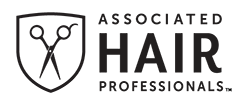by Mark Lees, PhD
This article appears in 2021 | Volume 2, Issue 3 of AHP Indie Stylist magazine
 Cosmetologists and estheticians inspect the skin and scalp of the human race more frequently than anyone. They are not just artists, they are helpers in keeping skin healthy, and that includes the scalp. Cosmetologists are not physicians, but they are in a unique position to detect and refer scalp conditions, skin disorders, and diseases that may need medical attention.
Cosmetologists and estheticians inspect the skin and scalp of the human race more frequently than anyone. They are not just artists, they are helpers in keeping skin healthy, and that includes the scalp. Cosmetologists are not physicians, but they are in a unique position to detect and refer scalp conditions, skin disorders, and diseases that may need medical attention.
In your day-to-day practice, make it a point to observe the scalp and/or facial skin of every client you see. If you find a potential scalp condition that alarms you, gently point it out to the client, and suggest they see a physician or dermatologist for proper diagnosis and scalp treatment.
A lesion is defined as a mark on the skin that is not part of the normal skin. Most lesions found on the scalp are benign. Scars from childhood or surgery (including facelifts!), benign freckles, birthmarks, and moles occur and are seen routinely. Skin tags are another common lesion. These frequently occurring lesions are most often benign—unless you notice bleeding or dried blood, or if the lesion is raised, such as a raised mole or skin tag that could get caught on a comb or easily scraped. In these scalp condition incidences, the client should be referred to their doctor.
COMMON INFLAMMATORY SCALP CONDITIONS & TREATMENTS
PFB
Ingrown hairs and pseudofolliculitis barbae (PFB) are both caused by ingrowing hairs. Most common in men in shaved areas, the hair has been cut so short that it grows into the side of the follicle, creating an inflammatory obstruction. The obstruction creates a low-oxygen environment in the follicle, ideal for bacteria to cause infection. The inflammation can proceed to being a papule, pustule, or even a cyst.
PFB is more common than isolated ingrown hair pustules. It is frequently seen in African American men (but can occur in anyone who shaves closely) who have curly-patterned beard or scalp hair, and who shave areas on their head or scalp. PFB is most often more than a few lesions in any area. The lesions can also leave pigmented marks after they heal.
With the exception of cysts and rare severe cases, these PFB lesions do not usually require medical referral and can be cleared by the use of a salicylic acid serum or gel. The trick in preventing PFB and ingrown hairs is shaving in the direction of hair growth and not shaving too close. Using a shaver or razor with an elevated blade is the best choice. This cuts the hair, but the razor has a “bumper” to stop the hair from being cut too short.
Scalp Acne
Scalp acne is exactly what it sounds like, and it can also be treated with salicylic acid shampoos and serums. A form of scalp acne called pomade acne impacts follicles that are caused by oily or waxy hair products, including hair waxes, scalp oils, and some styling gels and sprays. Pomade scalp acne presents as small bumps and comedones around the forehead and temples near the hairline. Pomade scalp acne can also affect the scalp skin. The culprit is often coconut oil and cocoa butter used in products. Both these ingredients are known to be comedogenic (clogged pore-producing). The solution to pomade scalp acne is to stop using current products, switch to lighter-weight, non-oily products, and to try to keep the products off the skin surface as much as possible.
Seborrheic Dermatitis (Dandruff)
Seborrheic dermatitis, commonly known as dandruff, is a condition of both the scalp and the facial skin. This flaky, dry-looking, often red or pink irritation can occur anywhere on the head but is often seen around the frontal hairline. In darker skin, dandruff can appear as lighter-colored flaky scales. Seborrheic dermatitis can be itchy or have a burning sensation, especially when chemicals are applied to the area.
On the face, seborrheic dermatitis presents as red, flaky skin. Many clients will think that this scalp condition is dry skin and apply moisturizers, which actually inflames the condition. Seborrheic dermatitis is frequently seen in the forehead, across and in the corners of the nose, behind or in the ears, and in the eyebrows. All of these are oily or waxy areas of the skin. Seborrheic dermatitis is not contagious. The exact cause of seborrheic dermatitis is unknown but is believed to be associated with yeast on the skin.
 AHP Indie Stylist magazine
AHP Indie Stylist magazine
AHP Indie Stylist magazine is a bimonthly publication, created to speak directly to you, the independent hair stylist and barber. In this issue:
- AHP Indie Stylist of the Year: Indie Stylist of the year Nicole Leal shares how her career as makeup artist, master hair stylist, and global educator continues to blossom
- Rose Gold Color: Rosy pink, lavender, sky blue...the options are endless
- Enforcing Client Brochures: Setting boundaries for your clients and yourself is the key to a happy career
